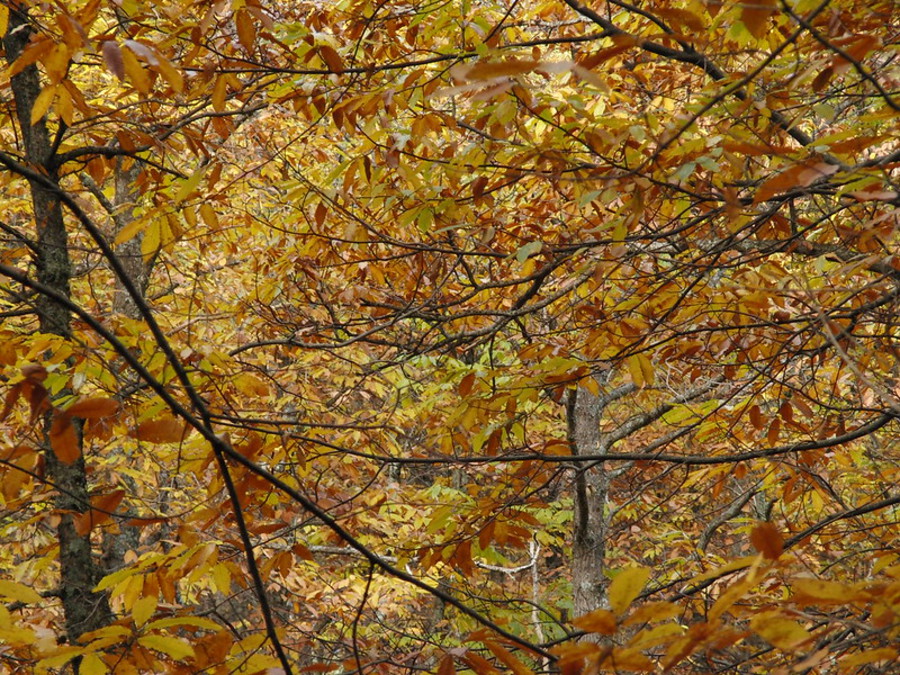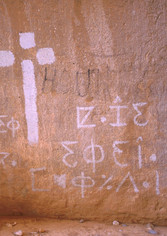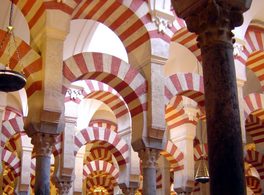Courses and Workshops
Index / Activities / Courses and Workshops / Autumn season courses at Casa Árabe
Autumn season courses at Casa Árabe
From October 18, 2019 until December 31, 2019Check dates, schedules and entry conditions for each activity.
MADRID
Casa Árabe headquarters (at Calle Alcalá, 62).
Check dates, schedules and entry conditions for each activity.
Throughout the fall of 2019, Casa Árabe’s headquarters in Madrid is
offering a wide-ranging variety of programs, including courses and
workshops on different topics.
One will be given on popular culture, another on calligraphy and a third course on the Amazigh language.
You can see the dates, schedules and prices on our website. Register now to take part.
You can see the dates, schedules and prices on our website. Register now to take part.
-
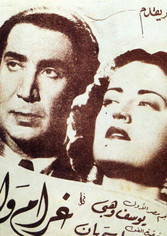 Poster from the film “Gharam wa intiqam,” by Youssef Wahbi (Egypt, 1944)
Poster from the film “Gharam wa intiqam,” by Youssef Wahbi (Egypt, 1944)Popular Culture in the Arab World: The twentieth century
From October 18, 2019 until February 23, 2020Registration open from October 18, 2019 through November 24, 2019. The course will be held on two Sundays, November 17 and 24, from 10:30 to 7:00 p.m., with a lunch break lasting an hour and a half.MADRIDCasa Árabe headquarters (at Calle Alcalá, 62). Classroom 1 Registration open from October 18, 2019 through November 24, 2019. The course will be held on two Sundays, November 17 and 24, from 10:30 to 7:00 p.m., with a lunch break lasting an hour and a half. Price: 120 euros.In Spanish.This course on art, music, cinema and popular dance in the Arab world will take place on two Sundays, November 17 and 24, and will be given by professors Victoria Khraich Ruiz-Zorrilla and Nadia Jallad. Registration open until November 14.The course is a reflection upon popular culture in the Arab world throughout the twentieth century, a time when the culture of entertainment was developed and spread worldwide, driven mainly by the Egyptian and Lebanese cultural industries. To examine this, the course will provide a historical overview of the main forms of artistic expression produced by the people themselves, and by the elite for the people’s consumption, placing a highlight on the instrumental nature of such culture to serve the purposes of Arab nationalism and other similar local ideologies, such as Palestinian nationalism.
The sessions will discuss four main subjects: the plastic arts (signage and graphic humor), music, film and dance. At each session, we will view, analyze and interpret different forms of popular art production, taking a look at their socio-historic context and the symbolism used in the works, in order to reveal their explicit or implicit ideological intentions and allow those attending to grow familiar with the most widespread aesthetics and popular values in the Arab world.
General objectives
By the end of the course, those attending will:
▪ Gain a general overall knowledge of the socio-historical and political events in the Arab world throughout the twentieth century, above all the main countries which produced and distributed pop culture on an international scale (Egypt and Lebanon).
▪ Be able to recognize emblematic artistic film and music production from the period, created for consumption by the masses.
▪ Become familiar with a whole series of Arab music and film performers who were iconic during the twentieth century, identifying their ideological positions.
▪ Be able to interpret the basic symbolism that can be seen in pan-Arabist and Palestinian nationalist political signs and posters.
▪ Be able to determine relationships of similarity and differences with European pop art productions, thus strengthening their intercultural skills and awareness.
▪ Have acquired significant sociocultural knowledge about the Arab world, which will promote effective communication at ease with the Arab people with whom they interact.
Profile of students for whom the course is intended:
People interested in popular culture and culture of the masses. Arabic language students. Plastic and stage artists interested in the Arab world. Employees of companies who have to maintain direct contact with Arab clients or partners. The general public. The number of participants is limited to a maximum of 25.
Sessions:
The course has a duration of 14 class hours, taught in four sessions lasting three and a half hours each. The course will be held on two Sundays, November 17 and 24, from 10:30 a.m. to 7:00 p.m., with a lunch break lasting an hour and a half.
Sunday, November 17
• 10:30 a.m. to 2:00 p.m. Session I: Culture of the masses and political propaganda. Political signage (Victoria Khraiche Ruiz-Zorrilla)
• 3:30 to 7:00 p.m. Session 2: The development of graphic humor in the written press. Theater and television (Nadia Jallad)
Sunday, November 24, 2019
• 10:30 a.m. to 2:00 p.m. Session 3: Middle Eastern dance and the Egyptian film industry (Victoria Khraiche Ruiz-Zorrilla)
• 3:30 to 7:00 p.m. Session 4: The uprise of the music industry (Nadia Jallad)
Professors:
Victoria Khraiche Ruiz-Zorrilla has a PhD in Semitic Studies from the Universidad Complutense de Madrid, as well as a bachelor’s degree and Master’s degree in Teaching Spanish as a Foreign Language. She has been a lecturer of Spanish at the University of Damascus and a contributing educator at the Cervantes Institutes in that capital city and Cairo. Moreover, she was a teacher of Spanish as a foreign language in the programs given by Asilim (Association for the Linguistic Integration of Immigrants in Madrid) at the Refugee Reception Center (CAR) in Alcobendas, at La Casa Encendida and at its own headquarters. At present, she is an associate Arabic literature professor at the Universidad Complutense de Madrid (UCM) and of Spanish language at the Fundación Ortega-Marañón in Toledo, activities which she combines with translation and teacher training on teaching Spanish as a foreign language.
Nadia Jallad has a bachelor’s degree in Management and Business Administration from the European University in Damascus and is a graduate in Asia and Africa Studies from the Universidad Autónoma de Madrid. Jallad worked in Syria as a project director within several international oil companies, and as a teacher and trainer of adults and children for the United Nations Children’s Fund (UNICEF). Since she arrived in Spain in 2011, she has received training on teaching the Arabic language, having specialized in teaching Levantine Arabic and Arabic for business. She has taught courses on the Levantine dialect and standard Arabic at various academies and at the NGO Asilim (Association for the Linguistic Integration of Immigrants in Madrid), where she is responsible for the Arabic teaching programs. Since 2015, she has taught Arabic courses at Casa Árabe’s Language Center and has given various workshops on Levantine Arab culture.
Course information sheet
-
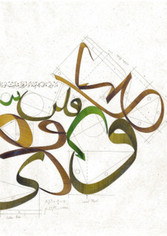 Image: Pablo Casado
Image: Pablo CasadoCourse II on “thuluth” style Arabic calligraphy
From October 18, 2019 until February 22, 2020Registration from October 18 through November 14. The course will be held on the weekends of November 16-17 and 23-24, including these two Saturdays from 5:00 to 8:00 p.m. and the two Sundays from 11:00 a.m. to 2:00 p.m.MADRIDCasa Árabe headquarters (at Calle Alcalá, 62). Classroom 4 Registration from October 18 through November 14. The course will be held on the weekends of November 16-17 and 23-24, including these two Saturdays from 5:00 to 8:00 p.m. and the two Sundays from 11:00 a.m. to 2:00 p.m. Price: 120 euros.In Spanish.You can now register for this new course, which will be taught by Pablo Casado on the weekends of November 16-17 and 23-24 at our headquarters in Madrid.Because the last course was so successful and we received such a large number of requests to hold more, Casa Árabe is offering this new calligraphy course, which is a continuation of the course given back in February. During the course, participants will get the chance to become very familiar with the art of Arabic calligraphy in even further depth, including its different forms in the “thuluth” style (“sülüs” in Turkish), one of the main classical styles in Arabic writing. In addition to being reminded of the proportions of the letters and the rules to be followed, they will learn how to join the letters together and the steps to take in order to produce a final calligraphy work.
The course, which will be taught in Spanish, is open to all members of the public, because no prior knowledge of the Arabic language or any past practice in calligraphy is necessary.
Course contents:
Introduction to traditional teaching methods, both Turkish and Arabic
Introduction to the use of materials and learning to use them properly
Introduction to the letters and their forms through practical calligraphy exercises
Introduction to the different manners of joining letters
Preparation of a final piece or work in accordance with classical models
Materials:
The materials required for the workshop (calligraphic pen, ink and paper) are included in the price for registration, and participants may keep them when the course is over.
Sessions:
The course will be held on the last two weekends in November, Saturday and Sunday, November 16-17 and 23-24. The class schedule on the two Saturdays is from 5:00 to 8:00 p.m. and on the two Sundays from 11:00 a.m. to 2:00 p.m.
In all, the course includes 12 class hours, and the amount charged for tuition is €120.
How to register:
The number of participants is limited to a maximum of 15.
Registration open from October 18 through November 14, through the ticket sales section on this website.
Pablo Casado
Casado was born in Madrid in 1982, the city where he grew up and received his academic training. He always felt a special attraction towards the forms of Arabic calligraphy, but it was not until the year of 2008 that he was able to come into contact with the calligraphic pen for the first time, having attended a brief introductory course on calligraphy in the nesih style. A few days of practice were enough to arouse a great interest towards this form of art in him, and he soon felt the need to receive as much knowledge as possible from a true master who could teach him each and every one of its finer details.
It was then that he met the well-known and highly acknowledged calligrapher Nuria García, who would become his mentor and teacher. With her help, he traveled to Istanbul for the first time in the year of 2009, and thanks to her he was able to meet his own masters. That is how he began to complete his first lessons, with their help, and that of master calligrapher (khattat) Davut Bektas, always under the supervision of master Hassan Çelebi. Approximately two years later, he also began to receive lessons from the khattat master Ferhat Kurlu, who, along with Nuria García, would become one of his most influential teachers.
In 2014, after having fully devoted himself to learning this art, he earned his icazet or calligraphy diploma, in the styles of thuluth and nesih at the IRCICA (Center for Research of Islamic History, Art and Culture). In the end, his diploma was signed by master calligraphers Hassan Çelebi, Ferhat Kurlu and Nuria García.
At present, he continues to travel to Istanbul regularly and spends long periods of time there so that he will not lose contact with his masters and to be able to continue learning and perfecting this art.
Pablo Casado’s website
Course information sheet
-
Tifinagh writing workshop
From October 18, 2019 until November 04, 2019The workshop will be held on Monday, November 4 from 6:00 to 8:00 p.m.MADRIDCasa Árabe headquarters (at Calle Alcalá, 62). Classroom 8. The workshop will be held on Monday, November 4 from 6:00 to 8:00 p.m. Prior registration required.Register by following this link.
In English.On the upcoming date of November 4, university professor Fatima Agnaou will be giving this free workshop to initiate learners in the writing and culture of the Amazigh people (Berbers). Registration has now begun.Casa Árabe is offering this beginners’ workshop on the writing and culture of the Amazigh (Berbers), the indigenous people in the countries of North Africa. The course will be taught by Fatima Agnaou, a university professor and researcher at the Center for Research on Teaching and Pedagogical Programs at the Royal Amazigh Culture Institute of Morocco. The workshop has been organized as part of the events to mark the International Year of Indigenous Languages with the cooperation of the International Chair for Amazigh Culture, of the Euro-Arab Foundation for Higher Studies in Granada, which is holding its fourth Euro-Amazigh Forum, titled “The Amazigh Diaspora: Berbers in/from Europe,” in Granada on the dates of November 7 and 8.
Fatima Agnaou will also be giving a conference on “The Rebirth of a Diminished Language: The Amazigh language in Morocco,” on the next day, November 5, 2019, at 7:00 p.m., at the Casa Árabe headquarters in Madrid.
General objectives:
- Introduction to Amazigh culture, its dimensions and features, and the territory where it is spoken.
- Teaching how to write and pronounce the Tamazight (Amazigh) language.
- Learning to write your name in the Tifinagh writing system.
Profile of students for whom the course is intended:
Adult members of the public in general. No prior knowledge of the Amazigh language is required.
How sign up
Registration is open from October 18 to 31. The workshop will be held on Monday, November 4 from 6:00 to 8:00 p.m. The workshop is free of charge, but the number of participants is limited to a maximum of 15. Four spaces will be reserved for Casa Árabe’s Arabic Language Center students, to be assigned in order of registration.
Tamazight/Amazigh/Tifinagh
Tamazight is an Afro-Asiatic language which belongs to the Hamito-Semitic family of languages. It includes a whole series of variants which are spoken by the Amazigh people (also known as Berbers), the indigenous peoples of the countries in North Africa, in parts of Morocco, Algeria, Libya, Tunisia, Mali, Niger, Egypt, the autonomous cities of Melilla and Ceuta, and the Canary Islands. Tifinagh (ⵜⵉⴼⵉⵏⴰⵖ), known in its ancient form as “Libyc Berber,” is the alphabet which is used to write Tamazight. It is written from left to right and dates back to at least the third century BC.
Fatima Agnaou
A university professor and researcher at the Center for Research on Teaching and Pedagogical Programs at the Royal Amazigh Culture Institute of Morocco (IRCAM), Agnaou is the author of Gender, Literacy and Empowerment in Morocco (Routledge, 2004) and several education and applied linguistics articles that have been published in domestic and foreign journals. She also co-authored Alphabétisation et développement durable au Maroc: Réalité et perspectives (Literacy Programs and Enduring Development in Morocco, Rabat, 2001). In 2010, she was the director of one of the issues of the journal “Language and Linguistics” based on “L’enseignement de la langue amazighe au Maghreb” (“Teaching of the Amazigh Language in the Maghreb Region,” Imprimerie Universitaires Fès), and in 2011 “Le Lexique Scolaire” (“School Vocabulary”), publications by the IRCAM. She is also a member of the editorial committee for the scientific journal ASINAG.
Workshop information sheet
Fourth Euro-Amazigh Forum on “The Amazigh Diaspora: Berbers in/from Europe,” on November 7-8, 2019, Fundea, Granada

